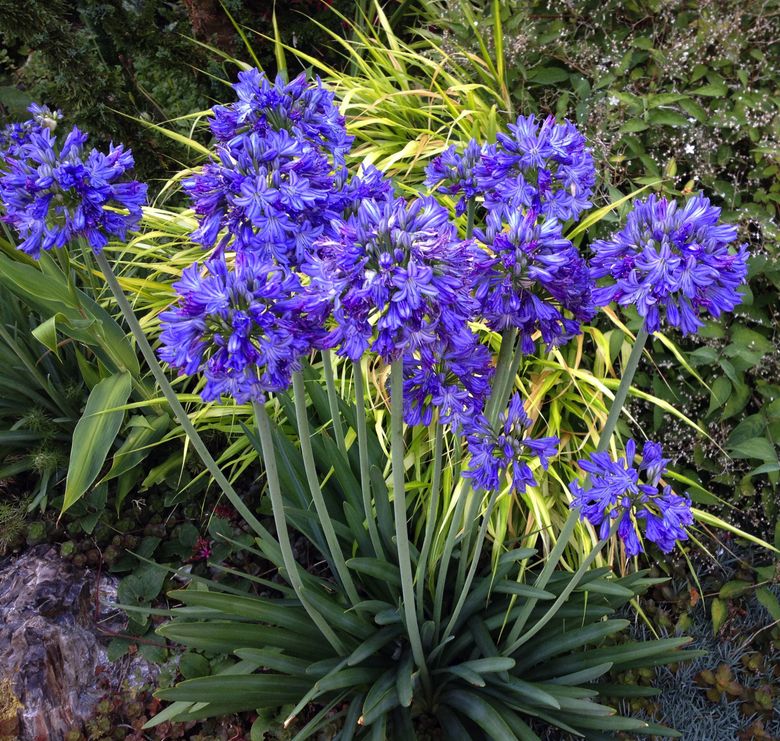Grasping the Art of Agapanthus Care: Vital Steps for Healthy Growth and Dynamic Blooms
In the world of gardening, the cultivation of agapanthus stands as a satisfying undertaking for those that seek to nurture these sophisticated blooming plants. With their striking blooms and stylish vegetation, agapanthus has actually captured the interest of gardeners worldwide. However, accomplishing optimal growth and lively blooms calls for a nuanced strategy that includes various important steps. From choosing the ideal variety to mastering trimming strategies, the trip in the direction of growing growing agapanthus plants is complex and holds the essential to unlocking the full capacity of these organic treasures.

Choosing the Right Agapanthus Variety

When selecting the right Agapanthus range for your garden, think about aspects such as climate viability, blossom shade, and development behavior. Agapanthus, commonly referred to as Lily of the Nile or African lily, is available in a selection of colors ranging from shades of blue and purple to white. Choose a bloom shade that enhances your existing garden scheme to develop an unified landscape. Furthermore, take into consideration the climate in your region to make sure the Agapanthus selection you pick can grow in your details problems. Some selections are extra forgiving of chilly temperatures, while others like warmer climates. Understanding the growth habit of various Agapanthus varieties is essential for proper positioning within your yard. Some selections have a clumping development practice, suitable for containers or borders, while others have a more spreading nature, appropriate for ground cover or mass plantings. By thoroughly examining these aspects, you can choose the best Agapanthus range to improve the charm of your yard.
Perfect Planting Conditions
Thinking about the optimum environmental demands is crucial for successful Agapanthus farming. Agapanthus plants are delicate to cold temperatures and ought to be protected from frost throughout winter months.
To ensure healthy growth and vivid blooms, plant Agapanthus bulbs at a deepness of concerning 2-4 inches and area them 8-12 inches apart. Mulching around the base of the plants helps retain dampness and subdues weed development.
Watering and Feeding Tips
Keeping appropriate wetness degrees and giving essential nutrients are crucial elements in the treatment program for Agapanthus plants. When it pertains to watering Agapanthus, it is crucial to strike an equilibrium. If overwatered, these plants choose regularly moist dirt yet are at risk to root rot. During the growing period, water deeply as soon as a week, making certain the dirt is well-draining Learn More Here to stop waterlogging. In hotter environments or throughout periods of dry spell, more constant watering may be required to keep the dirt equally damp. Nevertheless, reduce watering in the winter season to stop waterlogged conditions.
Fertilizing Agapanthus is necessary for promoting healthy and balanced growth and other prolific blooms. Apply a well balanced plant food, such as a 10-10-10 formula, in the very early springtime as brand-new growth emerges. By following these watering and fertilizing pointers, you can ensure your Agapanthus plants flourish and generate dynamic, resilient flowers.
Trimming Techniques for Agapanthus
Trimming Agapanthus plants at the appropriate times and with appropriate methods is vital for keeping their wellness and advertising optimum development and blooming. The excellent time to prune Agapanthus is in late winter or very early spring before new growth emerges.
For flowered stems, wait up until the flowers have perished and after that cut them back to the base. This not only cleans the plant's appearance yet likewise encourages the advancement of new blossom buds. Deadheading invested flowers can likewise redirect the plant's energy right into producing even more flowers instead than setting seeds. Nevertheless, if you wish to gather seeds for proliferation, leave some blossoms to dry and fully grown on the plant.
Bear in mind to utilize tidy, sharp tools to make precise cuts and reduce the danger of introducing diseases. Agapanthus. Routine pruning will certainly help maintain your Agapanthus looking neat and healthy while making certain a plentiful screen of attractive blooms
Dealing With Usual Parasites and Diseases
After guaranteeing proper pruning techniques for Agapanthus, it is necessary to address typical pests and diseases that can affect the wellness and vitality of these plants. One typical bug that influences Agapanthus is the Agapanthus gall midge.
Additionally, Agapanthus plants can endure from origin rot if they are planted in improperly draining dirt. By being attentive and taking timely action against insects and illness, you can assist your Agapanthus plants grow and generate vibrant flowers. Agapanthus.

Verdict
Finally, mastering the art of agapanthus treatment includes choosing the appropriate range, providing optimal planting problems, appropriate watering and fertilizing, ideal pruning techniques, and attending to typical pests and diseases. By complying with these vital steps, you can make sure healthy development and vibrant blooms for your agapanthus plants. Bear in mind to regularly keep track of and keep your plants to advertise their general wellness and durability.
To make sure healthy growth and vivid blossoms, plant Agapanthus light bulbs at a depth of concerning 2-4 inches why not try this out and area them 8-12 inches apart. By adhering to these watering and fertilizing pointers, you can guarantee your Agapanthus plants prosper and produce vivid, durable flowers.
One common parasite that influences Agapanthus is the Agapanthus gall midget. Additionally, Agapanthus plants can experience from origin rot if they are planted in improperly draining pipes soil. By following these vital actions, you can make sure healthy and balanced growth and dynamic blooms for your agapanthus plants.